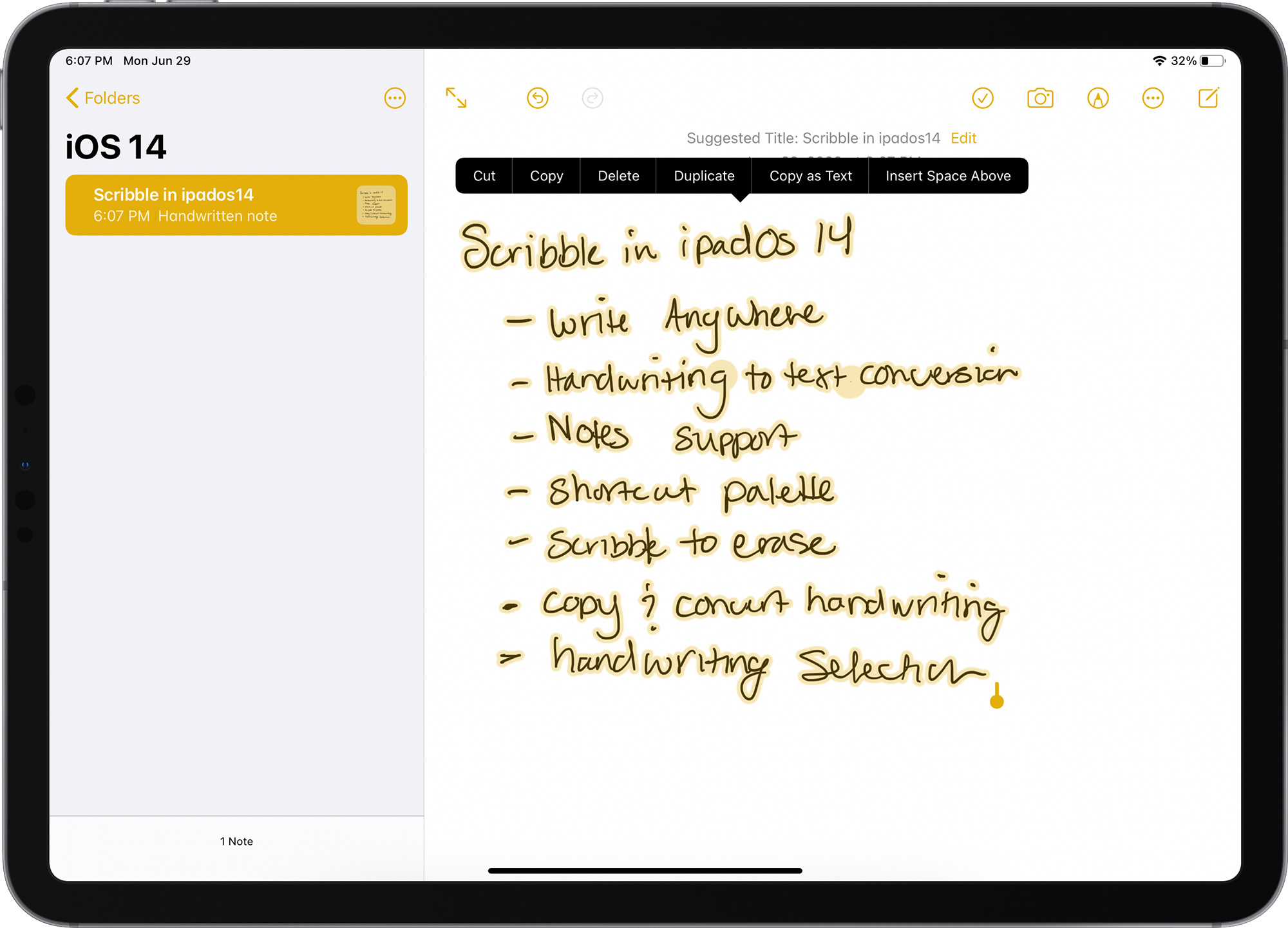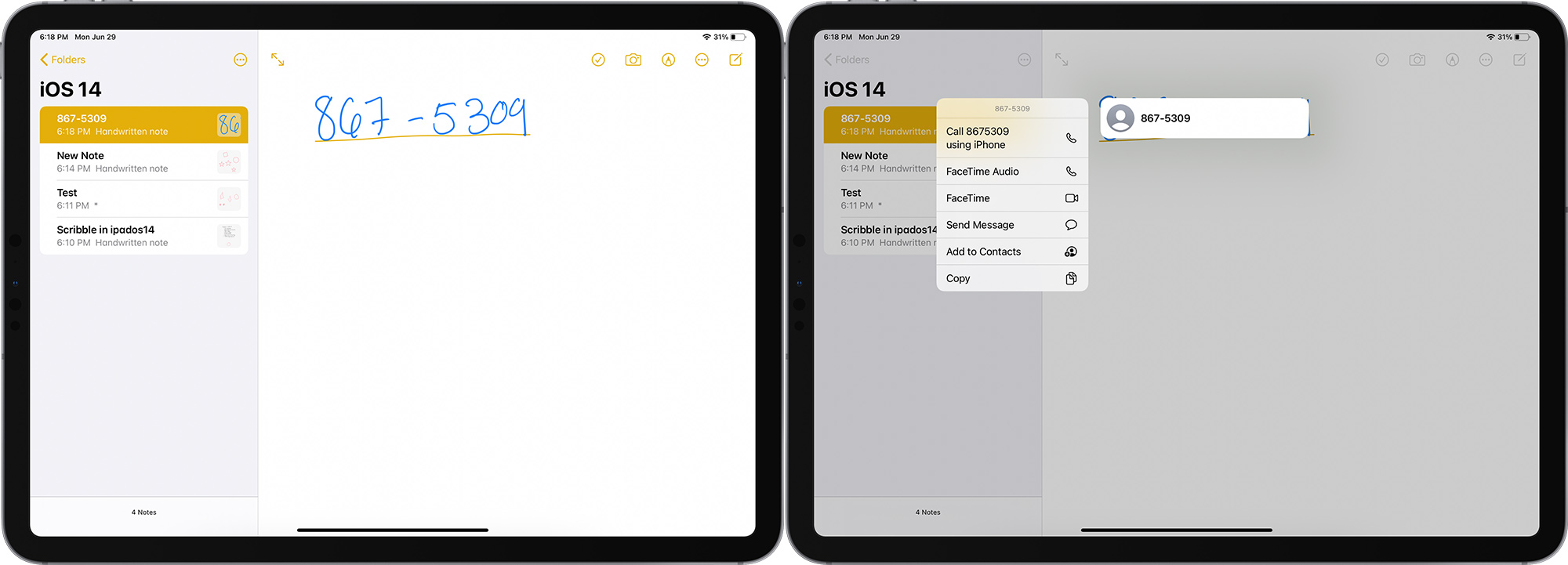
Apple has expanded several iPadOS 14 Apple Pencil features to additional languages, improving Apple Pencil functionality for those who write in French, German, Italian, Portuguese, and Spanish.

According to Apple's iOS and iPadOS Feature Availability page, these languages can now be used when copying handwriting as text and there's also data detector support.
That means if you write something in French, German, Italian, Portuguese, and Spanish, you can now copy the handwritten text and paste it as standard typed text, and addresses and other content written in these languages will also show up as interactive and clickable.

Both Copy Handwriting as Text and Data Detectors were already available for the English and Chinese languages, but have expanded much more broadly. Various dialects are supported including French (Belgium), French (Canada), French (Switzerland), French (France), German (Austria), German (Germany), German (Switzerland), Italian (Switzerland), Italian (Italy), Portuguese (Portugal), Portuguese (Brazil), Spanish (Spain), Spanish (Latin America), and Spanish (Mexico).
Apple earlier this year introduced Apple Pencil Scribble support for these same languages, allowing German, French, Spanish, Italian, and Portuguese speakers to write in their native language across iPadOS.
Article Link: iPadOS 14 Apple Pencil Features Expand to French, German, Italian, Portuguese, and Spanish Languages

